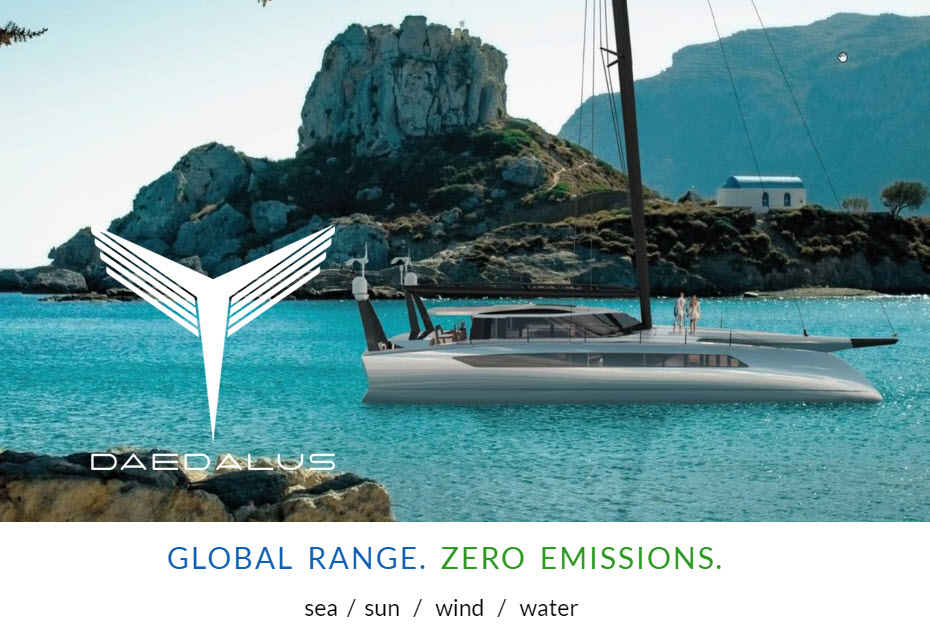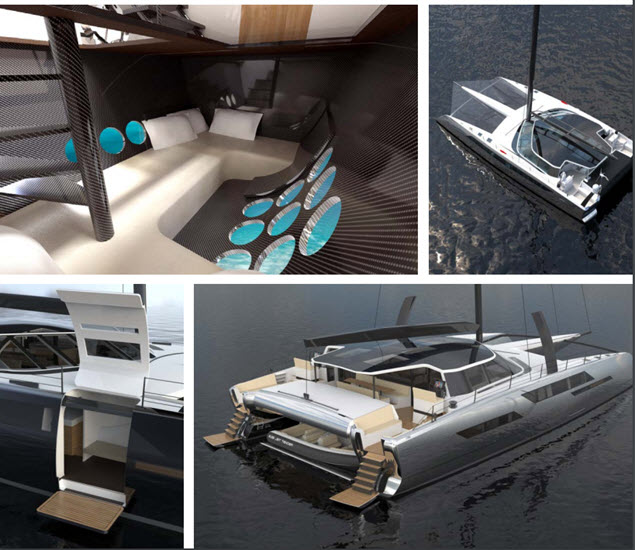
- New Engineering Standards
- A Global Shift to Fossil Free Exploration with Cutting Edge Design
Daedalus Yachts has created the Daedalus 80, acclaimed to be the first pleasure sailboat to be equipped with a battery storage system and propulsion using an electrolyser that produces hydrogen and combines it w ith a fuel cell.
ith a fuel cell.
“At Daedalus, new design concepts, cutting-edge engineering, and new systems integration have been applied to achieve an extremely high quality, comfortable, safe, clean and green performance catamaran for blue water sailing.
Industrial techniques similar to aerospace and automotive production lead to better engineering, better functionalities and a controllable, reliable, quality of structural parts and systems.”
Similar in some ways to the Energy Observer which also uses hydrogen and fuel cells as part of its overall propulsion system, the Daedalus 80 is not an experimental craft, but rather a very luxurious catamaran.
Energy Source
The combination of energy generated from renewable sources means that there is always sufficient power available. Clean and safe electrical energy can be used for all equipment and systems onboard without the need to use any fossil fuel. The 6.2m tender is also run electrically and can be charged from the Deep Blue Hybrid onboard power system.
Hydrogen is generated onboard and the energy is stored in BMW lithium battery banks.
The Process:
The Daedalus takes seawater and then highly purifies it, then using a PEM-proton exchange membrane the pure deionized water (H2O) is split into its constituent parts, hydrogen (H2) and oxygen (O2), via an electrochemical reaction.
A DC voltage is applied to the electrolyzer, water is fed to the anode (or oxygen electrode) and is oxidized to oxygen and protons, releasing electrons. The protons (H+ ions) pass through the PEM to the cathode (or hydrogen electrode), where they meet electrons from the other side of the circuit and are reduced to hydrogen and stored in carbon-fiber reinforced tanks thus drastically improving weight to storage ratios.
When then the batteries are in need of more energy than is being provided from nature outside air is delivered to the fuel cell stack. Hydrogen travels from the tanks to the fuel cell stack. There, it goes through a chemical reaction involving the oxygen in the air, the resultant current is used to re-charge the batteries.
Depending on the sailing speed, continuous free and clean power of over 50kW can be generated and stored. New advances in propellers, electric propulsion, battery technologies, solar panels and hydrogen systems make this possible giving us the ability to operate with ZERO EMISSIONS.
![]()
Read the most up to date Fuel Cell and Hydrogen Industry news at FuelCellsWorks




